目次

Photo: Akio Lorenzo OYA
Buongiorno! This is Lorenzo Oya Akio, a journalist based in Italy.
Over the course of the next two columns, I will be presenting an interview with Joaquin Garcia, Head of Design at Italdesign, one of Italy’s leading design and R&D companies. In the first part (Vol. 4), we discuss the concept car “Quintessenza by Italdesign,” which was unveiled in April 2024. Additionally, I sought his insights on what kind of creativity designers should express, given the current plateau in autonomous driving and electrification technologies.
Joaquin Garcia
After studying Industrial Design at Cardenal Herrera University (Valencia), he obtained a Master's degree in Vehicle Design from the Royal College of Art in London in 1998. Following his work at Renault, Ford, and Škoda, he served as Head of Exterior Design at SEAT/CUPRA starting in 2015. After heading the European Design Center at China's NIO, he was appointed Head of Design, overseeing both car and product design, at Italdesign in March 2023.

Photo: Akio Lorenzo OYA
The Meaning Behind ” Quintessenza ( The Fifth Element ) “
Q: The “Quintessenza by Italdesign,” unveiled at Auto China in Beijing in April 2024, advocates an EV concept that “embodies the relationship between humans and nature in various forms.” Italdesign has historically been one of the pioneers in combining GT and SUV concepts. This time, however, you are attempting to merge GT with a pickup truck.
Joaquin Garcia (JG): Let me begin by explaining from a business perspective. When considering the global markets and business areas—specifically Europe, Asia including China, and North America—we immediately concluded that developing a pickup truck was the way to go. As you know, today, pickup trucks have become a status symbol. They serve not only as a reflection of one’s economic standing but also as an expression of oneself. The drivers of these vehicles lead a life that embraces sports and a love for nature. They enjoy not just office work, but also make the most of their leisure time.
From a design perspective, we wanted to create an “Italian pickup.” What defines an Italian car? It’s sports cars, GTs, and high-performance vehicles. We combined these elements with the essence of a pickup truck—its practicality and functionality.
When you look at the front, it appears extremely sharp and sporty. The shark nose is designed to slice through the air, emphasizing a performance-oriented approach. The headlights give the impression of glaring at the road ahead. The wing-shaped fender covers envelop the large wheels.
On the other hand, the square, solid feel of the rear contributes to the functionality, which is crucial for a pickup truck’s cargo space. The doors are wide, but with scissor doors, they require minimal space for opening and closing. By refining the surface, we’ve achieved a very Italian aesthetic. With these elements, we aimed to appeal to a broader audience.
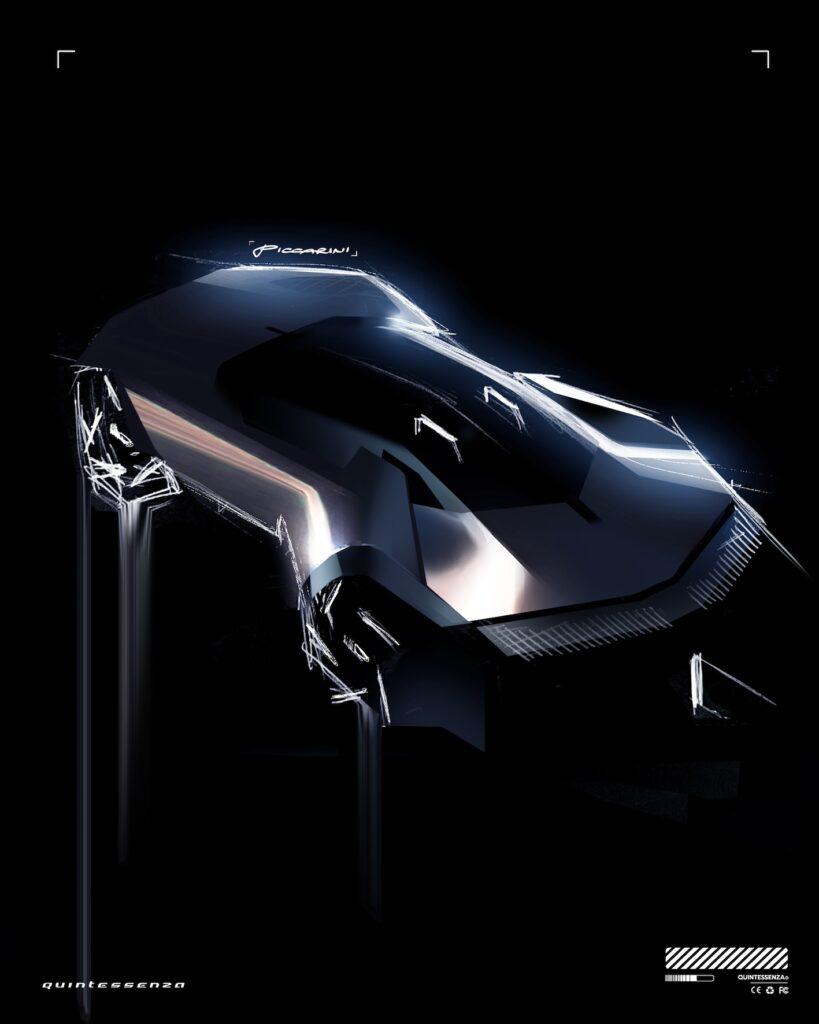
Courtesy of Italdesign Giugiaro.
Q: However, as we can see from the case of the Mercedes-Benz X-Class, it seems that pioneering the premium pickup market is not an easy task.
JG: What we unveiled at the Beijing Motor Show reflects our strong belief that the pickup market will experience significant growth in China.
Existing European-brand pickups are more practical, while American-made pickups are more truck-oriented. I can confidently say that we have invented a new segment: the hyper-pickup, something that has never existed before.
There have been previous attempts to merge coupe and pickup designs, such as the 2023 ‘Audi Activesphere Concept.’ While it gives off a nimble and agile feel, we have taken it a step further. Quintessenza is not a vehicle that transforms into a pickup—it is a pickup from the outset.
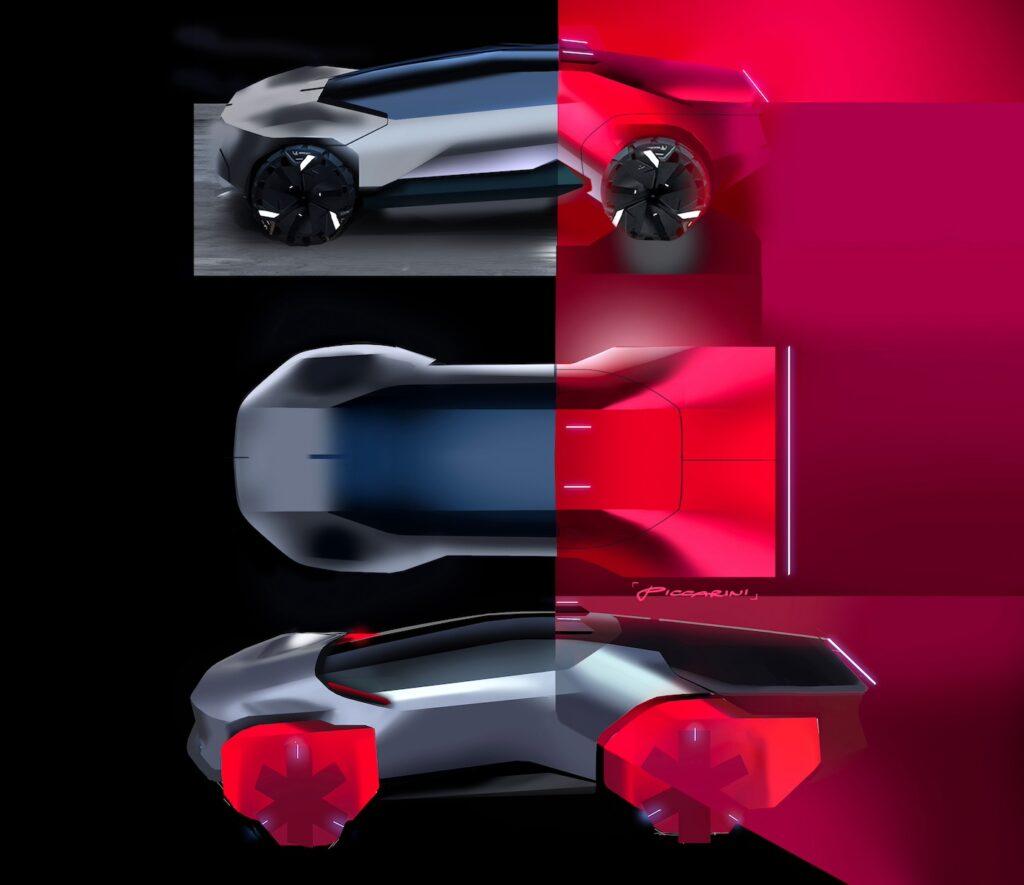
Q: Preferences for body types change with the times.
JG: That’s exactly right. In my home country of Spain, as well as in Eastern Europe, sedans have long been the dominant preference. Even if someone was driving a station wagon, it was often perceived as a commercial vehicle.

Courtesy of Italdesign Giugiaro.
Q: What design elements did you incorporate to make the Quintessenza by Italdesign appear as both a GT and a pickup?
JG: This time, we had to ensure a massive luggage space. Of course, compensating for that in the front would have been a mistake, so we came up with a few innovations. During the brainstorming phase, there was even a suggestion that the luggage area could extend, but in the end, we decided to keep the overall length fixed. Humanity should avoid unnecessary complexity.
Q: Given the concept of seeking harmony with nature, it seems that avoiding complexity is the right approach.
JG: Regarding the side view, the rear fender has the effect of interrupting the flow of the eye, so even though there is an additional 400mm of trunk space beyond that, it doesn’t make the rear appear overly long to the viewer.
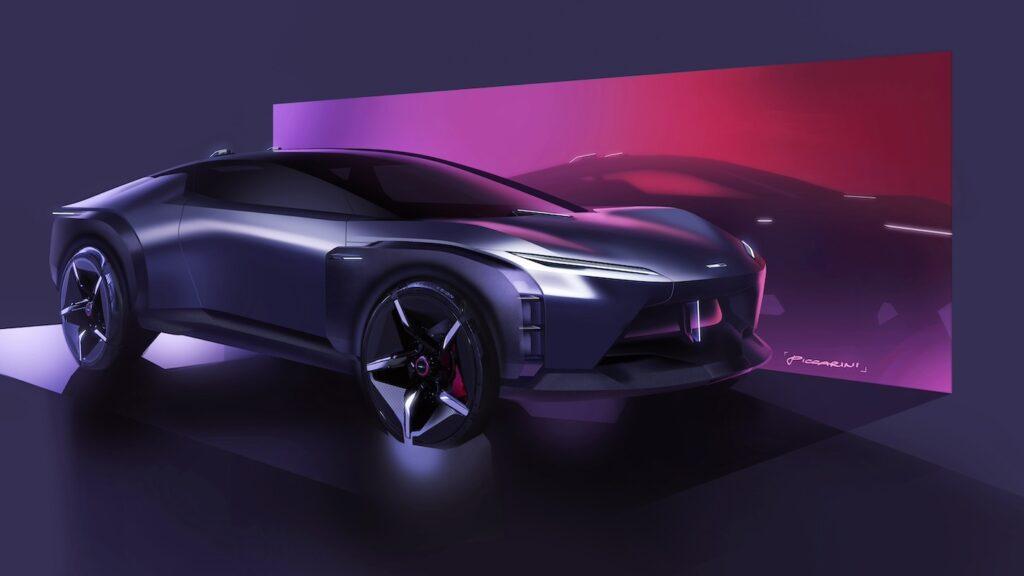
Q: The C-pillar also has a very distinctive shape.
JG: The structure is both architectural and, at first glance, reminiscent of the Batmobile. Its primary purpose is to define the silhouette as a pickup. Secondly, it helps layer and direct the airflow, keeping it close to the body. Additionally, this is a show car. If we compare it to a fashion show, it’s like a model walking the runway. We wanted to take this opportunity to experiment with something different from mass-produced cars and enjoy the process.
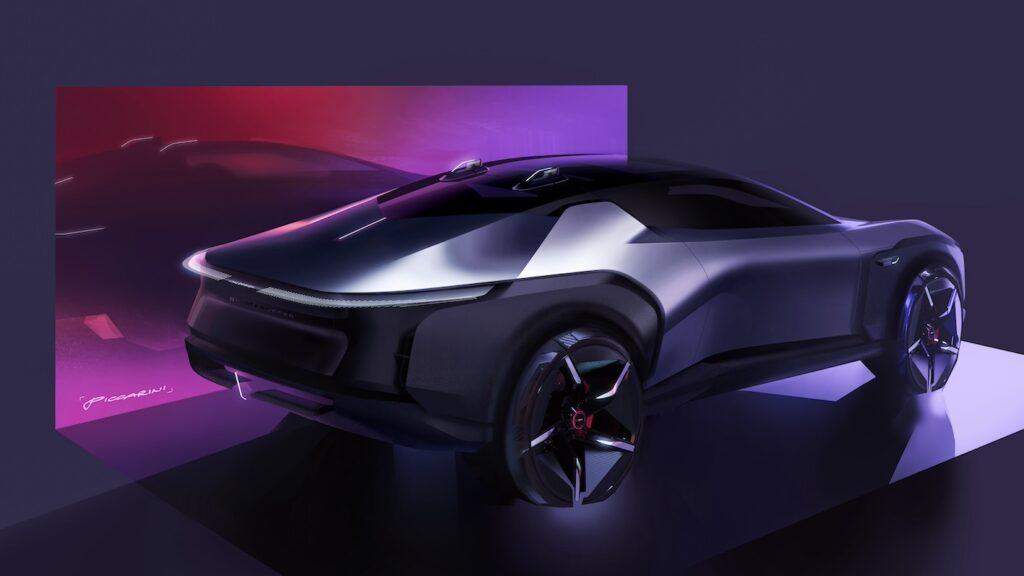
Q: In the interior, you advocate for minimalism.
JG: The primary reason is “humanized technology.” The overall concept of this vehicle, especially the interior, is to make technology more human. Technology shouldn’t be something that overwhelms people. If we truly aim for human-centered and user-centered design, we must recognize that each individual is very different from one another. To achieve this, avoiding complexity and keeping things simple is the best solution.
Secondly, when you’re driving in nature, you’re likely trying to enjoy the outside world. In such moments, the interior shouldn’t steal the spotlight. That’s why the interior design needs to be clean. However, being clean or minimalist doesn’t mean losing emotion or stimulation. The shapes and colors present should evoke adrenaline, optimism, and positive energy. The space must be one that fills the occupants with happiness and makes them feel invigorated.
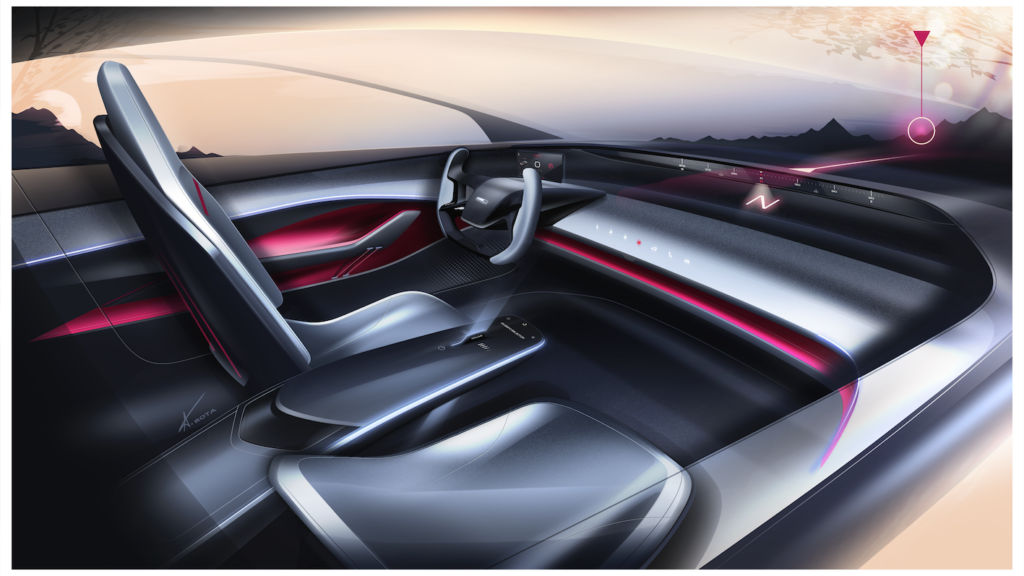
Courtesy of Italdesign Giugiaro.
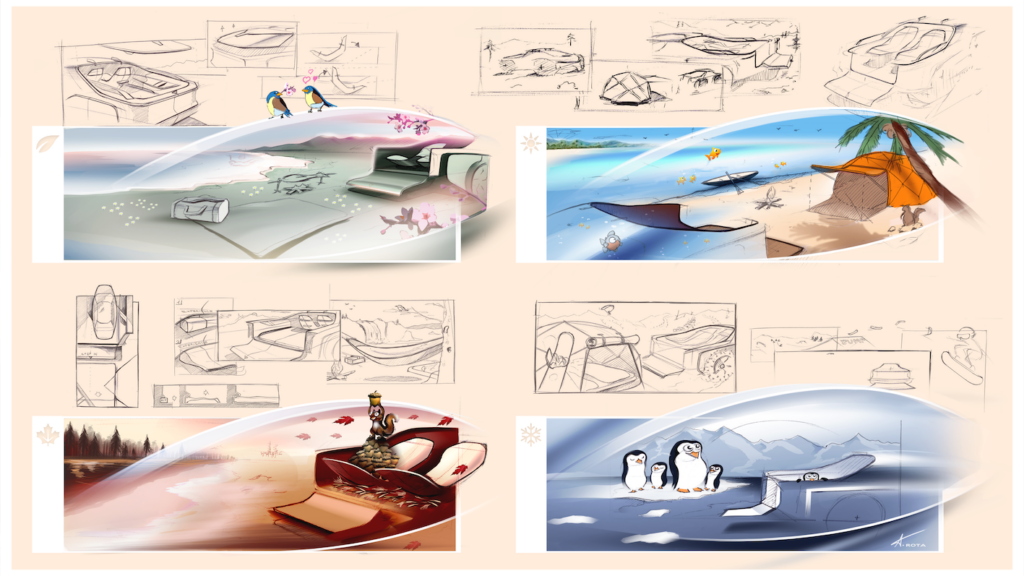
Courtesy of Italdesign Giugiaro.
Q: Will that still hold true in the era of autonomous driving?
JG: According to our analysis, while the number of in-vehicle functions has increased, the number of displays hasn’t grown at the same pace. This is because more functions can now be controlled through voice commands, gesture controls, and eye tracking. In the future, the number of displays will likely continue to decrease.
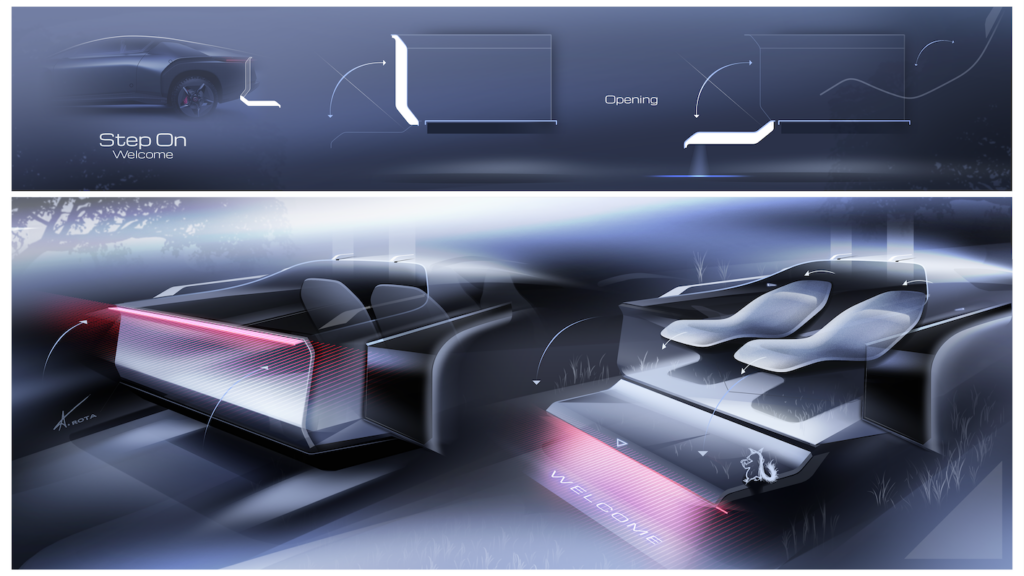
Courtesy of Italdesign Giugiaro.
In the era of autonomous driving, the interior could become a second home, a second office space, or even both. On the way to your destination, it could serve as an entertainment space or a business opportunity. In such a scenario, it wouldn’t be appropriate for the space to be dominated by displays or devices.
Q: However, it’s also true that, for now, the sales side is demanding more features and increasingly complex equipment.
JG: It’s true that when working with OEMs, we often receive requests like “more chrome” or “larger screens.” In that context, when you look at the (simple) interior of the Tesla Model 3, it’s clear that their team accomplished a very challenging task. Their effort to achieve a “clean” design is commendable. It’s truly fascinating and has provided inspiration to the entire industry.
Q: At one point, autonomous driving was a major topic. Designers believed that once it became a reality, it would lead to greater freedom in automotive design. However, progress has stalled for various reasons. How does this relate to design?
JG: My daughter is now 11 years old. If I had been asked the same question five years ago, I would have said, “In her time, she probably won’t drive herself, thanks to autonomous driving.” However, my answer today is quite the opposite. I am certain that in 4 to 6 years, and when she gets her driver’s license, cars will still have steering wheels. In fact, the cars we are currently developing all have steering wheels.
The realization of autonomous driving faces hurdles beyond the vehicle itself, such as political and safety regulations. These discussions are not determined by design, nor are they led by OEMs. While the levels of autonomous driving will continue to evolve, allowing for hands-off relaxation even if not sleeping on highways, there will be no architectural changes to cars until Level 4. It’s only at Level 5 that we might see significant changes, but that is still a long way off.

Courtesy of Italdesign Giugiaro.
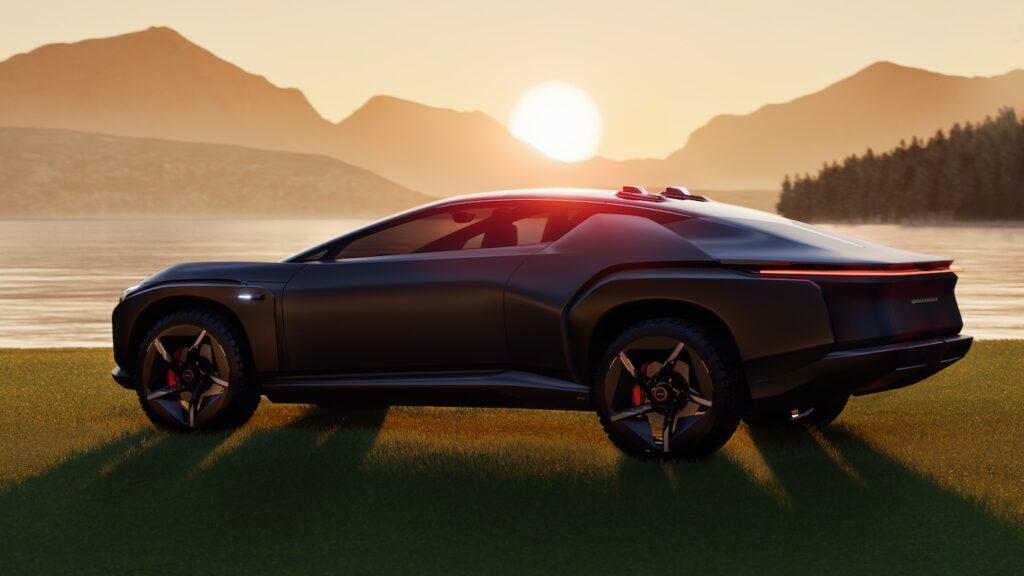
Courtesy of Italdesign Giugiaro.
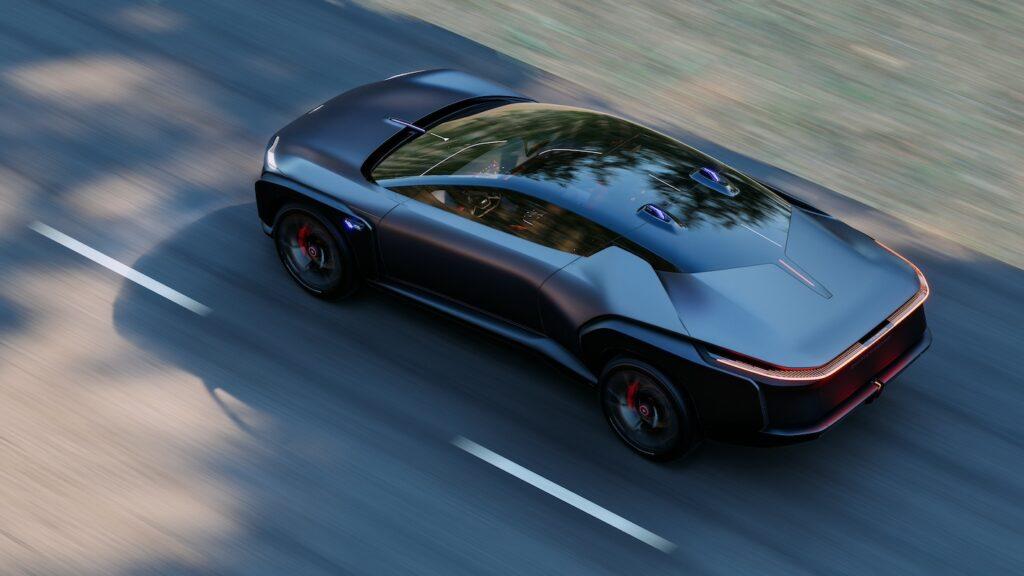
Courtesy of Italdesign Giugiaro.
Q: Electrification also seems to be at a plateau. What is your perspective as a designer?
JG: The advantage of electrification is that the floor tunnel disappears, creating open space in the front row, and there’s no need to connect the driver’s seat and center console to the dashboard. There’s also no tunnel in the rear seats. This offers flexibility and a more human-centered design.
On the other hand, there are disadvantages as well. In a skateboard-like structure, the floor is higher, which affects the seat height, preventing the calves from fully touching the seat. This is not ideal for posture during long-distance driving.
If I, as a designer, were asked about it, I would say that I don’t concern myself with the power source. It’s not something crucial to design.
Many manufacturers and OEMs are reconsidering their electrification plans and the phase-out of pure internal combustion engines (ICE). ICE and hybrids will continue to play a significant role. The choice of power source should be what’s best for the planet. We must also keep a close eye on market conditions, as well as factors like vehicle pricing and ownership costs, which impact users’ lives. In this process, the role of design is relatively small.
In recent years, as seen in new models from Stellantis and BMW, there are vehicles where the exterior design remains almost the same, but the powertrain can be chosen. While there are parts that need to differ between ICE and EV models, the basic design doesn’t need to change. A designer’s job is to focus on establishing brand value and identity.
From Mr. Oya:
In the next part, we’ll hear from Mr. Garcia, now the head of the design department, on how he plans to both preserve and transform one of Italy’s leading design and development companies.
Until then, arrivederci! (Goodbye for now!)
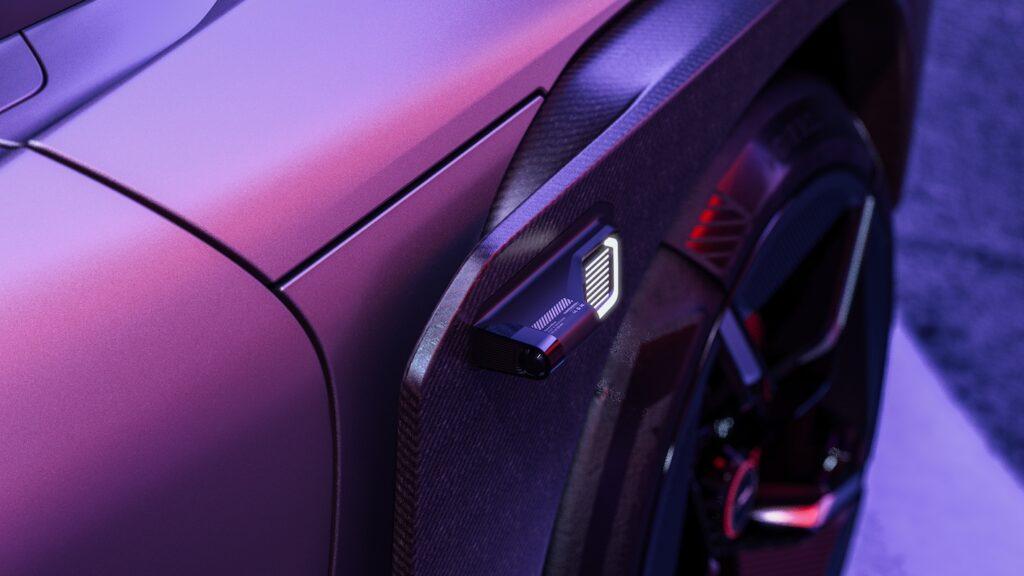
Courtesy of Italdesign Giugiaro.
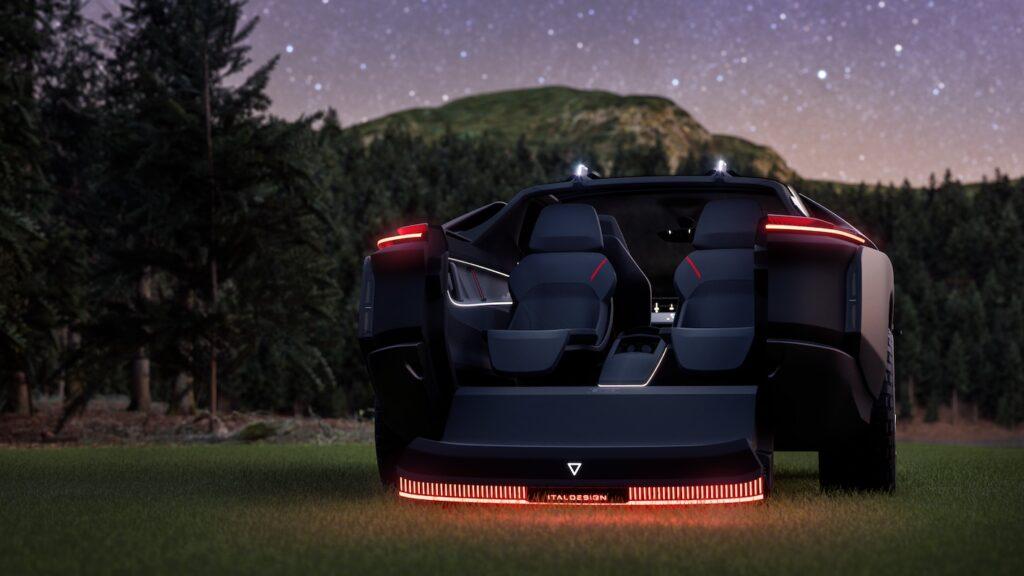
Courtesy of Italdesign Giugiaro.
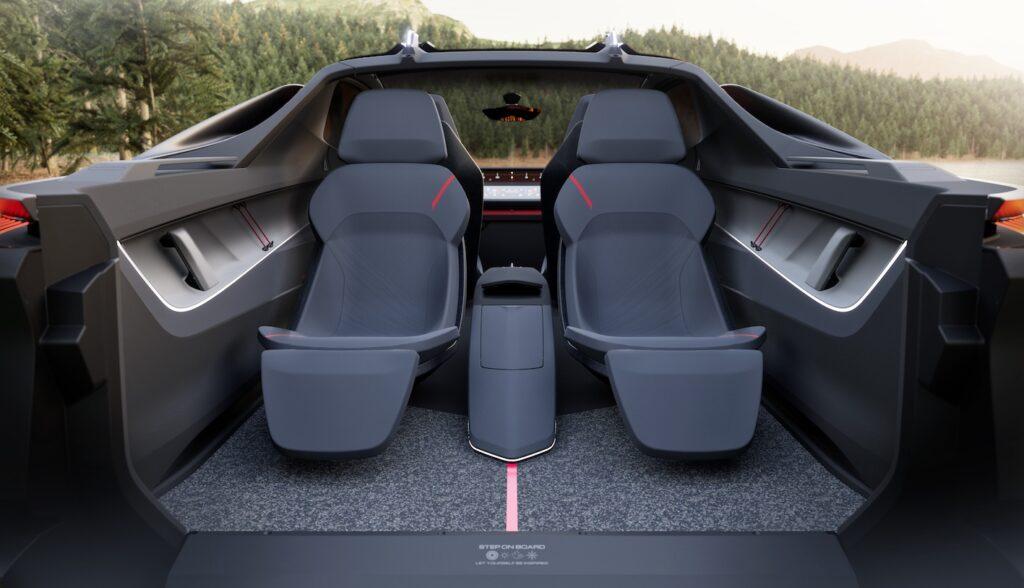
Courtesy of Italdesign Giugiaro.
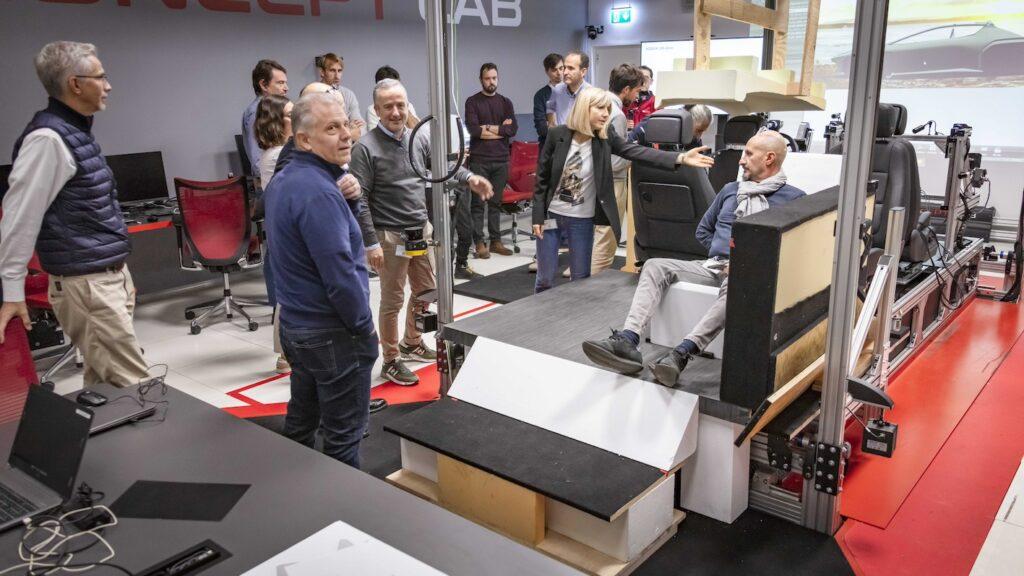
Courtesy of Italdesign Giugiaro.
Note from the Editorial Team:
Italdesign Giugiaro S.p.A.: Founded in 1968 by designer Giorgetto Giugiaro and engineer Aldo Mantovani, the company has been responsible for designing vehicles for numerous manufacturers worldwide. In 2010, the Volkswagen Group acquired 90.1% of the company’s shares, obtaining the brand name and patent rights. In 2015, following the resignation of VW Chairman Ferdinand Piëch, Giugiaro sold his remaining shares to VW, ending his relationship with Italdesign. The company is now under Audi’s management and continues to operate under the name Italdesign Giugiaro S.p.A., though Giugiaro himself is no longer involved.

